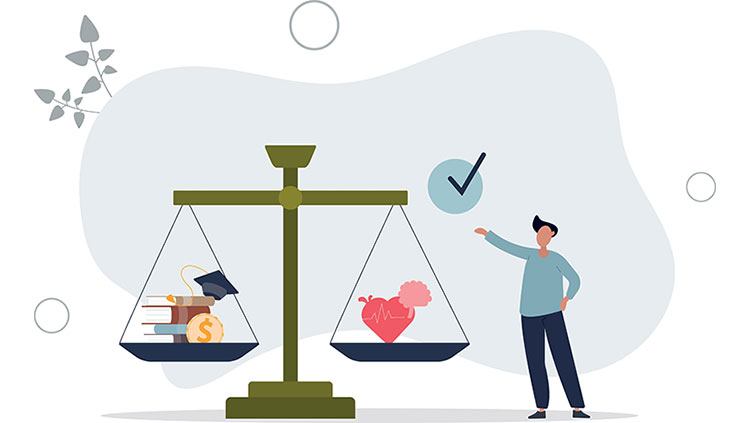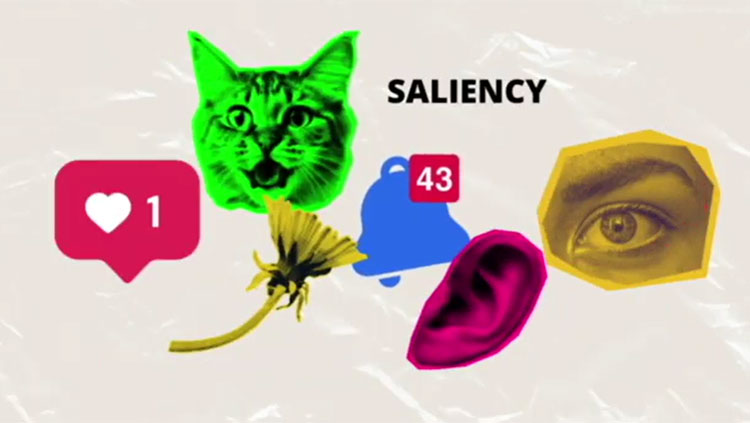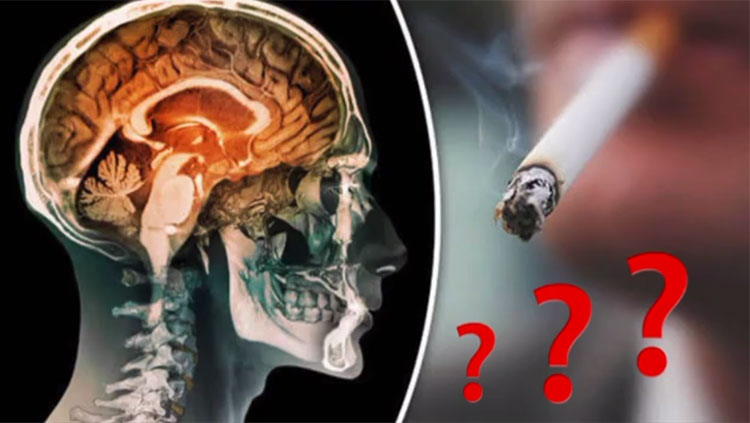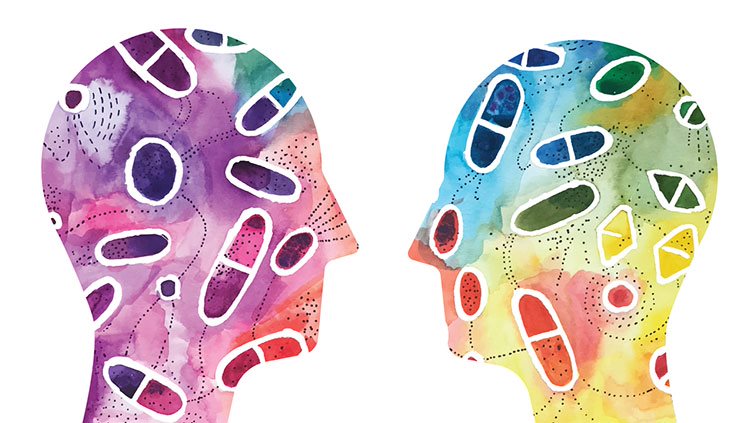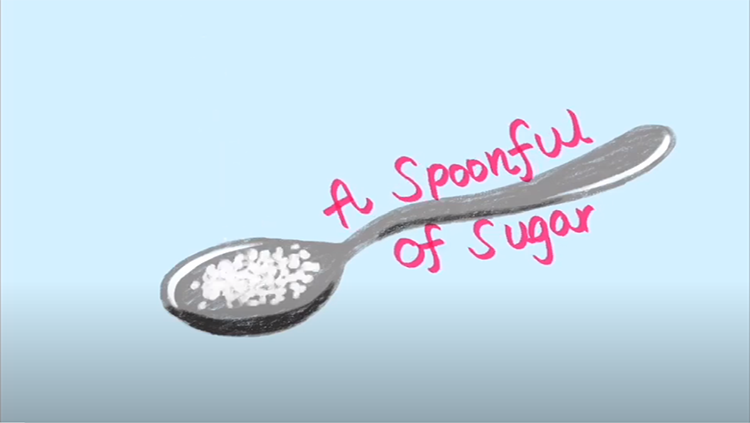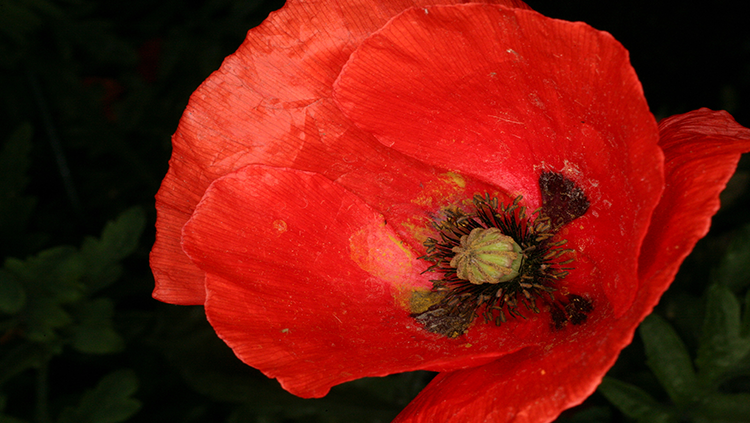San Diego--Would we have Poe’s Raven today if the tormented author had taken lithium to suppress his bipolar illness? Not likely, considering the high frequency of psychiatric illnesses among writers and artists concludes psychiatrist Kay Jamison of Johns Hopkins Medical School speaking this week at the Society for Neuroscience annual meeting in San Diego. Madness electrifies the creative process Jamison concludes, but this difficult drug-use dilemma raises an even more provocative question: Would we have Lucy in the Sky with Diamonds had the Beatles not taken LSD?
Lord Tennyson, Virginia Woolf, and Vincent Van Gogh, are familiar examples of artists and writers who suffered serious mental illnesses, but Jamison explained that psychiatric illness was the cruel engine of their creativity. Tracing their family pedigrees she showed that many of these artists’ siblings, parents, and descendants were institutionalize in mental hospitals, committed suicide, or endured life-long struggles with mania, despair, schizophrenia, or other mental disorders. The genetic backbone to mental illness is strong. Ernest Hemingway and his supermodel granddaughter Margaux Hemingway both killed themselves. Separated from one another in environment and experience by a generation, their fates were inevitably tethered by their DNA.
In all, seven members of the Hemingway family died at their own hand. This raises the question of why the genes of such devastating brain dysfunctions should persist in the human gene pool.
Statistics show that among all categories of creative artists, writers suffer by far the highest incidence of bipolar disorder, outstripping all other artistic professions. Why? Jamison concludes that the manic phase of bipolar disorder infuses the writer with furious energy and limitless stamina. The author foregoes sleep, is driven to take daring risks, expands their imagination and embraces grandiose thinking.
The crash of depression ending the manic phase immerses the writer in the depths of human suffering. This infuses poets and writers with the most monumental and profound dimensions of human experiences, moving them to contemplate the meaning of life, confront the certainty of death, and struggle against the agony of despair to survive adversity.
Once upon a midnight dreary, while I pondered weak and weary, [from The Raven]
Secondly, this introspective soul-searching phase raises self-criticism and sharpens editing of the copious material penned in the heat of mania.
Cured of their mental illness, such artists and writers would be gutted of their creativity and stripped of the means to realize it. Society would be deprived the beauty and insight the creative works of Van Gogh and Poe inspire had their tormented minds been healed with drugs. Thus, the seeds of madness survive like weeds in the human gene pool because, while not pretty, they are needed. Despite the cruel agony of such life-threatening disorders as bipolar disease and schizophrenia, the fruits of such creative minds benefit society.
Evidence of the link between madness and creativity goes well beyond statistics--it is now possible to see this connection in the disturbed wiring of the human brain. Rex Jung and colleagues of the University of New Mexico found that the same structure that is underdeveloped in the brains of people with schizophrenia (connections to the prefrontal cortex) are less well organized in people who score highly on psychological tests of creativity.
Choosing Madness
The potent mix of creativity and madness is imposed on writers and creative artists by the randomness of a genetic dice roll, but many artists with healthy minds choose to accept the Faustian bargain and induce madness with drugs to reach new summits in their art.
“Acid really opened me up,” Graham Nash of Crosby Stills and Nash discloses in his new autobiography Wild Tales, speaking of the transformative role LSD had on him as a songwriter. “I’d never heard anything like these songs,” he said after hearing David Crosby’s Déjá vu and Steven Stills’ Suite Judy Blue Eyes, which broke the mold of the 2.5 min format and saccharine lyrics of 1950s and 60s rock and roll.
“I was use to writing in the standard pop form--an intro, first, second verse, go to the chorus… Déjá vu was a completely different beast. I was completely blown away.” Nash describes creating the song Cathedral under the influence of LSD, just as the Beatles and other rock songwriters admit. From Cathedral:
And my head didn't know just who I was And I went spinning back in time And I am high…upon the altar High… upon the altar, high
“Weed unlocked my mind and my emotions, which had to be awakened for me to start writing meaningfully,” Nash explains. “I love Jennifer Eccles/ I know that she loves me…la-la-la-la… It sounded like bubblegum,” Nash says contrasting his past formulaic superficial songwriting as a member of the rock and roll band the Hollies. “We were maniacs,” Nash writes. “We smoked a joint and snorted a line before every session--a CSN ritual. It put us in a rapturous mood.” Cocaine revved up their nervous systems to such a manic frenzy the musicians often had to re-record sessions because the tempo of their guitar work and singing was ridiculously fast. “We would go into the studio at two in the afternoon and not come out until around four the next morning.” Heroin, at least for David Crosby, was the counterweight to the manic phase. Mania, depression and other mental disorders are devastating.
Not only disabling for the individuals afflicted with them, mental illness shatters personal relationships, fractures families, and cost society at large. Many courageous people struggle to hold their lives together under the burden of such a random and all-consuming disorder that mental illness uncontrolled by effective therapy can inflict. Other people who choose to induce these conditions pharmacologically will suffer the same burdens and life-risking consequences. But those who exploit drugs to manipulate their mind suffer even greater risks from two additional threats: toxicity and addiction. Jimi Hendrix, Janis Joplin, Hillel Slovak (Red Hot Chili Peppers), Jonathan Melvoin (Smashing Pumpkins), Alan Wilson (Canned Heat), Jim Morrison (The Doors), Nick Drake, Elvis Presley, Keith Moon and John Entwistle (both from The Who), Sid Vicious (Sex Pistols), Brent Mydland (Grateful Dead), Steve Clark (Def Leppard), David Ruffin (The Temptations), Howie Epstein (Tem Petty and the Heartbreakers), Allen Woody (The Allman Brothers Band), Dee Dee Ramone (Ramones), Momma Cass, and Ike Turner, are only a sampling of songwriters and musicians who died of a drug overdose. Apart from the personal tragedy drug addiction inflicted on these artists, a looming question unravels the motivation that impelled them to do it for the sake of their creative art: Was the music they produced using a pharmacological crutch worth the silence of music unborn, which will never be heard because of their premature death?

As George Koob, newly appointed director of the NIH, National Institute on Alcohol Abuse and Alcoholism, explained at the SfN meeting in his lecture on The Neurocircuitry of Addiction, allowing addicted lab rats to have unrestrained access to drugs or alcohol during withdrawal results in the animal consuming ever increasing amounts of the drugs--eventually self-administering levels of alcohol or opiates that would kill an animal that was not addicted. Rock stars and others with the wealth to afford limitless access to drugs fall into the same trap as the rat pressing a bar in its cage to deliver limitless drugs. “There is a Polaroid picture I have of a rock of cocaine that was bigger than the eight ball sitting next to it in the shot--and Tim Drummond and I finished it in three days,” Nash writes.
These drugs of addiction activate the brain’s reward system (amygdala, ventral striatum, and frontal cortex) which uses the neurotransmitter dopamine, but the system becomes less sensitive to the drug with repeated exposure to it, thus ratcheting up the dose needed to achieve the same effect (a process called drug tolerance). Eventually the brain’s reward system is shot. The addict now takes the drug not to achieve pleasure, but rather to avoid activating the brain’s pain and stress circuitry that are stimulated when the drug is withheld. “Reward in excess can activate the brain and body stress systems,” Koob said in his presentation at the SfN meeting. Koob’s research shows that in this stage of addiction, the body’s stress system becomes chronically activated. The same surge of hormones that ignite the fight-or-flight response in the hypothalamus and amygdala of the brain, setting the heart pounding, muscles twitching, and skin sweating, become activated during withdrawal and the drug is now taken to quell panic, not to obtain a reward. “He’d been more and more drug dependent, slipping into a state he called ‘cocaine psychosis,’ the paranoia that comes with being too high most of the time,” Nash explains of Crosby’s addiction. “He was so heavily into cocaine that most of Croz’s waking moments were spent figuring out how to score, where and when to get it, how much he had left, and how much to share with his friends.” “It actually got so bad, we had to build a room adjacent to the stage so Croz could wander off and freebase between songs. Often, David walked offstage, threw up from the drugs, and was literally dragged back to sing.” Addiction to cocaine, methamphetamine, and opiates is prevalent among well-known writers, including Stephen King, Robert Louis Stevenson, Philip K. Dick, Hunter Thompson, Ken Kesey, William Burroughs, Jack Kerouac, and Charles Dickens. LSD was used and advocated by Ginsberg, Thompson, and Kesey. Generally lacking in rock star wealth, alcohol is often the drug of abuse for writers, including many of those mentioned above as well as John Cheever, Tennessee Williams, Dylan Thomas, Truman Capote, William Faulkner, F. Scott Fitzgerald, and most famously, Ernest Hemingway.
Toxic Mix
The third blow in the Faustian bargain of exploiting drugs to promote creative artwork is toxicity. The toxic effects of alcohol on the brain are quite well recognized. A Cambridge University study published in the journal Molecular Psychiatry in 2012 highlights the toxic effects of cocaine on the brain. MRI imaging shows that the brain atrophies at twice the normal rate with age in cocaine-dependent individuals, losing about 3cc of gray matter per year. A person beginning to use cocaine at age 15 having a normal gray matter volume of 800 cc is down to 700 cc by the time he reaches 50 years of age. The loss of 100 ccs of gray matter (the volume of three shot glasses) seriously undermines cognitive function. Moreover, like a prefrontal lobotomy the loss of brain tissue is targeted. Most severely atrophied are the prefrontal and temporal lobes, areas critical for executive function and memory. According to neuroscientist Antonio Demasio of the University of Southern California speaking about creativity in the symposium at the SfN meeting that he chaired on this subject, these are the most critical brain regions for creativity, which requires imagination, abstraction, analysis, and memory. A new study reports an unexpected and persistent new mechanism for cocaine toxicity. Kevin Schneider and Anthony DeCaprio, chemists at Florida International University, report in a new paper published electronically in advance of print in the journal Chemical Research Toxicology, that enzymes in the liver (P450) react with cocaine to create a highly reactive chemical intermediate (cocaine-thiol), that binds to proteins and damages them by oxidation. The chemical reaction is so strong, this newly discovered reaction product can be used forensically to detect cocaine use in a person months after taking the drug.

His body devastated by drugs and near death, David Crosby’s life was only saved by a liver transplant. Marijuana may have opened Graham Nash’s mind but it may also have damaged it. A large body of evidence indicates that cannabis use is damaging to the brain, especially when used in adolescence when cannabis use increases the risk of developing schizophrenia and other neuropsychiatric problems later in life. A 2012 report in the Proceedings of the National Academy of Sciences by Madeline Meier and colleagues at Duke University following a cohort of 1,037 people from their birth in 1972 and 1973 to age 38 shows that cannabis users suffer a major decline in cognition. Neuropsychological testing was conducted at age 13 before cannabis use, and again at age 38. Those who used cannabis had a marked reduction in cognitive ability and the impairment was most severe when cannabis was used during adolescence when the brain is undergoing intense development. The neurotoxic effects on the adolescent brain have life-long consequences. Their study found that the mean IQ plummeted to below 90 in frequent cannabis users who began using cannabis as adolescents. IQ also drops in cannabis users who begin using marijuana as adults, but the damage is not as great.

Graham Nash describes the creative breakthroughs drugs allowed him, Crosby, Stills, and Young to achieve, but he also portrays honestly and in harrowing detail the tragic effects of drug use on himself and other band members, and especially the ghastly spiral of addiction and illness that nearly took David Crosby’s life. His honest and revealing account is clearly a work of love for his friends and family. In addition to the intriguing historical and autobiographical accounts it provides, this book also gives insight into how creativity works, how it can be facilitated using illicit drugs, and how drug addiction consumes lives. For a neuroscientist, the description of Crosby’s descent into drug use, near death, and recovery is a graphic case study in the neuroscience of addiction.
People abuse drugs for many reasons, most related to personal stresses. Many people who suffer mental illness, including writers and artists, turn to drugs to self-medicate, but some artists take them intentionally to boost their creativity and the performance of their art. Madness and creativity are linked, and some artists are willing to endure the self-destruction of devastating mood disorders and psychosis of mental illness to fuel creative works of art by deliberately inducing these mental states with drugs to unbalance an otherwise healthy brain. But there is a critical distinction separating artists who endure mental illness and create art from those who take drugs to create. The creative work of an artist who overcomes their mental illness--often by turning to art and literature to help them cope--is an inspirational personal triumph. But the creative work of a person who induces mental imbalance pharmacologically is the product of a drug.
***
There are many questions arising from this mix of creativity, madness, and drugs. I hope readers will contribute to the discussion in on-line comments:
1. Should artists and writers with bipolar disorder, for example, be treated with drugs even though this will diminish their creative drive and possible success as an artist?
2. Can the creative product--a song, painting, poem, or book-- justify the sacrifice and harm that will accompany conducting the creative pursuit under the influence of drugs?
3. Would we have had rock music without drugs?
4. If we accept the use of marijuana, cocaine, methamphetamine, LSD, and alcohol by rock musicians to achieve creative breakthroughs and delight us with their performance, what does that say about us in being willing to accept the destruction of another human being for our entertainment?
References
Jung, R.E. (2010) White matter integrity, creativity, and psychopathology: Disentangling constructs with diffusion tensor imaging. PLOS One 5(3): e9818. doi:10.1371/journal.pone.0009818
Meier, M.H. et al., (2013) Persistent cannabis users show neuropsychological decline from childhood to midlife. Proc. Natl. Acad. Sci. USAwww.pnas.org/cgi/doi/10.1073/pnas.1206820109
Schneider, K.J. and DeCaprio, A.P. (2013) Covalent thiol adduncts arising from reactive intermediates of cocaine biotransformation. Chem. Research in Toxicology, published on-line in advance of print: dx.doi.org/10.1021/tx4003116 This article was first published on Scientific American: http://blogs.scientificamerican.com/mind-guest-blog/2013/11/22/creativity-madness-and-drugs/Also In Addiction
Trending
Popular articles on BrainFacts.org



